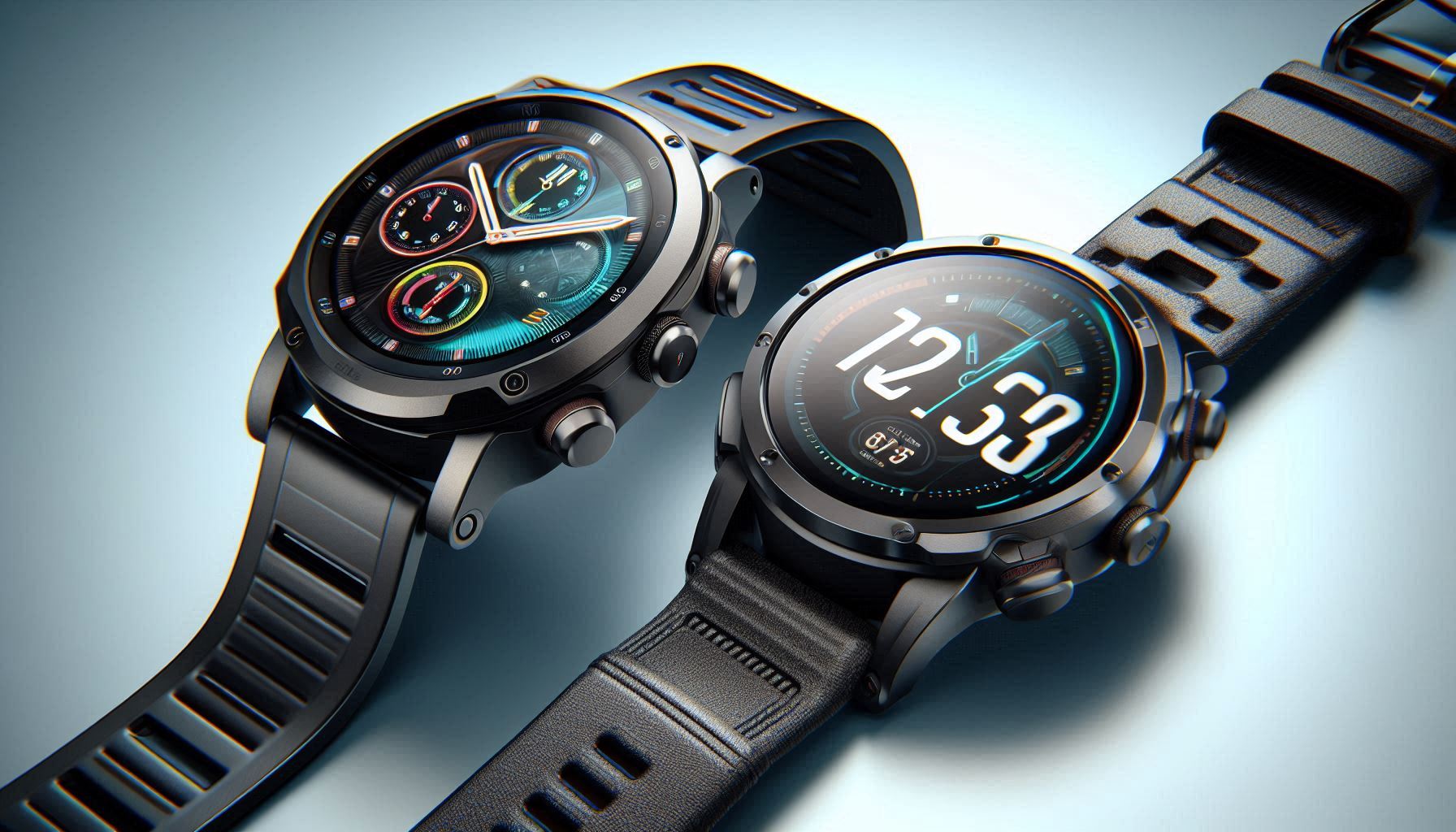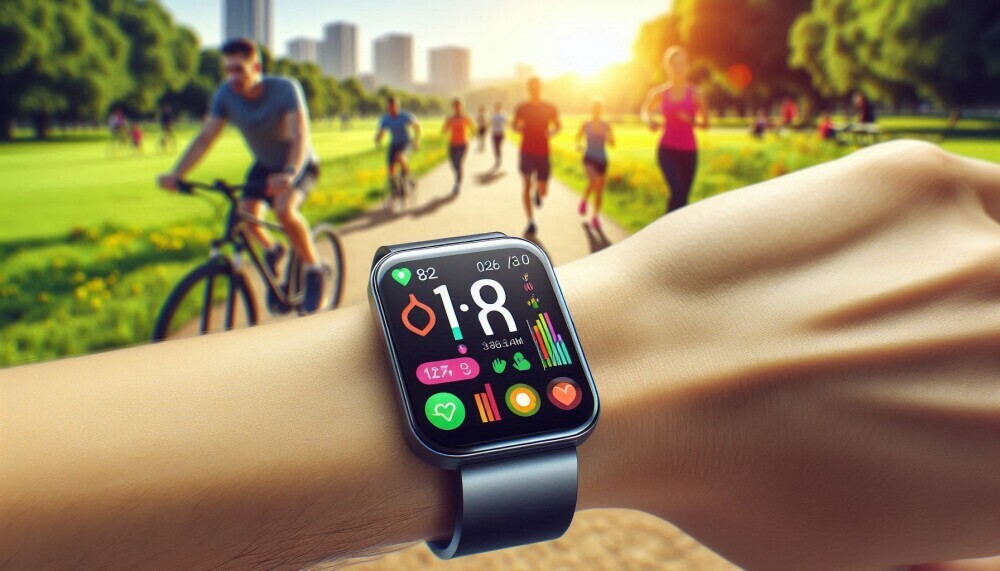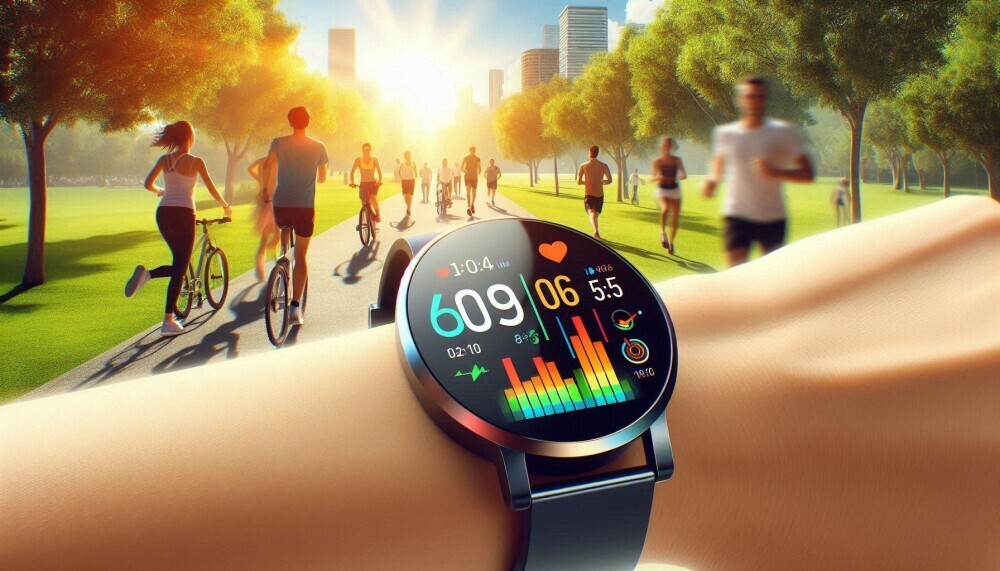Amazfit and Fitbit are two of the biggest names in the wearable health tech industry. Lots of people use their wearables in their daily lives to track their health. This article will be focussing on the subject of Amazfit Vs Fitbit For Casual Users. Do you own an Amazfit or Fitbit device? If you do, please let us know your thoughts. You can add a comment at the bottom of the page. Right, let’s begin!
Introduction
Choosing a fitness tracker or smartwatch as a casual user often comes down to finding the right mix of useful features, reliable tracking, good battery life and reasonable cost. Two brands that continue to dominate this space are Amazfit and Fitbit. Both offer models tailored to everyday users who want heart rate monitoring sleep tracking step counting medication reminders and basic workout metrics without the complexity or price tag of full sport watches.
In 2025 both brands have evolved further. Amazfit continues to push value with long battery life sleek hardware and generous feature lists built into devices like the Amazfit Band 7 and Active 2. Fitbit focuses on polished user experience superior sleep analytics and integration with Google services especially on the Charge 6 and Versa 4. This comparison is aimed at casual users who care about overall wellness tracking ease of use and a device that just works day to day.
Brand Overview
Amazfit is a brand by Zepp Health founded in 2015. It has gained a reputation for producing fitness trackers and smartwatches with strong battery life and a surprising number of health and sports features in budget friendly packages. The Amazfit Active 2 and Band 7 are two examples frequently praised for delivering high value.
Fitbit, now part of Google, has been known for wearable health trackers since 2007. The Inspire 3 and Charge 6 are popular among everyday users thanks to simple user interfaces reliable sleep data and seamless syncing with the Fitbit app. Google integration adds bonus features on some models such as Fitbit Charge 6.
Design Comfort and Build
Amazfit trackers vary from simple bands to smartwatches with sleek metal cases. The Band 7 is lightweight under one ounce with a colourful OLED screen and soft silicone straps. The Active 2 is slightly larger with a 1.3 inch AMOLED display and a thin casing that still feels light on the wrist.
Fitbit trackers are known for their soft bands and compact design. The Fitbit Inspire 3 has a small OLED display and stands out for comfort. The Fitbit Charge 6 adds a larger screen but keeps profile low. Both devices feel secure and unobtrusive even when worn to bed.
Battery Life
Amazfit excels in battery performance. The Band 7 can last between 12 and 18 days on a single charge in typical use and up to thirty days in power saving mode. The Active 2, even with full features and daily use, will last up to ten days.
Fitbit trackers also perform well but require more frequent charging. The Inspire 3 typically lasts ten days while the Charge 6 lasts around seven days with standard usage. Battery use will drop to two or three days if always on display is active or GPS is used heavily.
Fitness and Health Tracking
Amazfit trackers offer a broad set of health features including continuous heart rate monitoring blood oxygen stress tracking training readiness scores and exercise modes exceeding 120 types. Onboard GPS is available in the Active 2. Sleep tracking is solid though not industry leading.
Fitbit is renowned for its sleep data. Fitbit trackers handle sleep stages sleep score bedtime reminders and advanced analysis via the Fitbit app. Heart rate and step tracking are accurate. The Charge 6 also includes ECG and EDA stress sensors and built in GPS for run tracking.
App Experience
Amazfit uses the Zepp app which displays health and fitness data in clean charts. Navigation is simple though occasional sync delays can occur. The app allows offline maps on Active models and basic coaching suggestions.
Fitbit app is celebrated for ease of use and family oriented community features. Sleep stats training readiness and overall wellness are clearly presented. Integration with Google Fit MyFitnessPal and Strava works well. Fitbit Premium subscription unlocks guided programs wellness reports and deeper sleep insights.
Price and Value
Amazfit Band 7 is priced around fifty dollars making it one of the most capable budget fitness bands on the market. The Active 2 starts near one hundred dollars and gives onboard GPS long battery life and vibrant display.
Fitbit Inspire 3 retails for around eighty to hundred dollars offering bright display simple tracking and Fitbit community access. Fitbit Charge 6 costs around one hundred sixty and adds ECG EDA and Google Wallet support.
Pros and Cons
Amazfit Pros
• Excellent battery life up to thirty days
• Onboard GPS on Active 2
• Very affordable devices
• Robust support for many workout modes
• Alexa or voice assistant support on some models
Amazfit Cons
• App features can lag or feel basic
• Sleep tracking less polished than Fitbit
• Some sensors less accurate during high intensity workouts
Fitbit Pros
• Best in class sleep and wellness tracking
• Easy to use app and smooth syncing
• ECG and stress technology in Charge 6
• Built in GPS gives independence from phone
• Strong ecosystem and brand trust
Fitbit Cons
• Shorter battery life than Amazfit
• Higher price for comparable features
• Minimal third party app support
• Some users dislike subscription model for Premium
Casual User Use Cases
If you want a simple wearable that tracks your steps sleep heart rate and minimal workout modes all with long battery life and minimal charging Amazfit Band 7 is a strong choice. If you want GPS run routes or moderate fitness tracking the Active 2 delivers surprising value. For casual users more focused on sleep quality wellness trending health stats and occasional workouts Fitbit Inspire 3 or Charge 6 provides a smoother polished overall experience. If you use Google services Fitbit may integrate more seamlessly.
Frequently Asked Questions
- Can Amazfit devices track running without a phone
Yes models like Active 2 have onboard GPS so you do not need to carry a phone for run distance or pace tracking. - Does Fitbit Charge 6 require a subscription for ECG feature
No ECG and stress detection are available without subscription though additional wellness programs require Fitbit Premium. - Which offers better sleep tracking
Fitbit is widely rated as best for sleep accuracy and comprehensive sleep insights in its class. - Are both brands compatible with Android and iOS
Yes both Zepp app for Amazfit and Fitbit app support Android and iOS phones reliably. - Can Amazfit sync to Strava or Google Fit
Amazfit syncs with Google Health or Health Kit indirectly though compatibility is not as deep as Fitbit Connect. - Which device lasts longer on a single charge
Amazfit Band 7 batteries can last up to eighteen days and sometimes longer in power saving mode. Fitbit Charge 6 battery life is around seven days.
Conclusion
For casual users Amazfit offers unmatched battery life affordability and surprisingly comprehensive features. Band 7 and Active 2 deliver GPS heart rate sleep tracking and wellness metrics with minimal fuss and great pricing. These devices are excellent for daily fitness tracking without being tied to constant charging.
Fitbit shines in user experience sleep analysis and polished presentation of health data. The Inspire 3 is very approachable and Charge 6 adds advanced sensors while remaining accessible. If you value sleep quality stress tracking ECG feature and seamless ecosystem Fitbit remains compelling especially if you already use Google services.
Ultimately Amazfit suits anyone on a budget who hates charging often while Fitbit is a better pick for those who want trusted wellness guidance deeper sleep reflection and smoother experience even if it costs more. Casual users who charge once a week and want decent data may be perfectly happy with Amazfit while others who prioritise health insights may prefer Fitbit as their daily companion.
Choose based on your priorities comfort battery and whether wellness depth or value matters more to you.
Our Thanks!
We would like to extend our sincere thanks to you for reading our article on Amazfit Vs Fitbit For The Casual User. We hope that it has helped you with your search for a suitable wearable health tech device. If you would like some further reading, take a look at our blog! There are lots of really helpful and informative articles on a range of wearable health tech subjects. You might like our related comparison article which is titled Oura Ring Vs Fitbit: Which Fitness Tracker Wins?
Please let us know which fitness tracker you’re using or considering in the comments section below!
**Here is a bit of transparency. Our website www.vertevia.com does contain affiliate links and Amazon links. So, if you did make a purchase through the website, we may receive a small commission. This is at no extra cost to you whatsoever. It’s just a way for you to support us as we continue to bring you top quality content**
All the best!
Eamon





